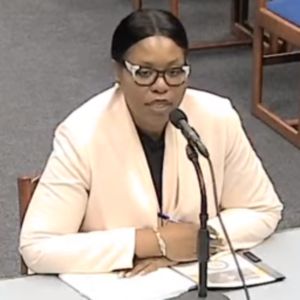Columnist Russ Vernon-Jones: Climate solutions tough, but can be done

Russ Vernon-Jones
| Published: 04-19-2024 7:01 AM |
My column last month, “Solving humanity’s shared climate crisis” noted that greenhouse gas emissions anywhere, cause climate change everywhere. I explained the importance of the countries that have gotten rich burning fossil fuels providing funds to help lower-income nations develop via clean, renewable energy. This elicited a guest column from Daniel Lyons, of Florence, “World energy systems will not change in the short-term” (Gazette, March 30), in which he expressed multiple criticisms of my views.
While I think he is correct that the changes I have called for will not happen readily or easily, that does not mean they are not necessary and possible. I think we need huge changes both in the United States and around the world if we are to prevent the most catastrophic effects of climate change. I believe humanity can rise to meet this challenge.
As I read it, the central argument of Mr. Lyons’s column is that the world is going to need to burn large amounts of fossil fuels for many years to come and there is nothing we can do about that. This is the same position that the fossil fuel companies are trying to sell us as they defend their out-sized profits. It is not, however, the view of the top scientists and analysts of the UN’s Intergovernmental Panel on Climate Change (IPCC) and the International Energy Agency (IEA). They have found that getting to zero carbon economies by 2050 is possible and is consistent with supporting robust economic development in lower-income nations.
I recommend that we take large sums from the ultra-wealthy by taxation to pay for climate action around the world and at home. For those who doubt that the top 1% are wealthy enough to finance global climate action, at the end of March it was reported that the wealth of the top 1% in the U.S. in 2020 was $30 trillion and is now $44.6 trillion! Even an additional $1 trillion per year on top of existing climate funding is estimated to be enough to meet the capital costs of decarbonizing economies around the world.
I understand that it would be a major battle to get our government to tax the ultra-rich at the required rate. But as I wrote last month, “It makes no sense for a small elite to have vastly more money than they need while humanity’s survival depends on putting sufficient resources into solving the climate crisis.” (I find it instructive to remember that the marginal tax rate on the wealthiest is now 37% with major loopholes, while from 1944 to 1963 the top tax rate was over 90%.)
The bad news is that 2023 was the hottest year on record and also the worst year ever for ice melt and greenhouse gas emissions. We are making progress, but we need to accelerate our progress and get serious about governments limiting the extraction of fossil fuels.
The good news includes the announcement that the U.S. offshore wind industry is having something of a comeback this year after a very bad 2023. Last year a number of developers backed out of contracts, apparently because rising interest rates made agreed upon projects unprofitable. However, when Massachusetts, Connecticut and Rhode Island invited bids for wind projects in March 2024 they got bids from at least four developers. Two of the projects combined could generate enough power to supply almost 1 million homes.
Three years ago there was virtually no battery storage on the U.S. electric grid. Batteries were not expected to play a significant role in the short term and the federal government didn’t even have a goal for battery installation. Unexpectedly, the battery storage on the grid now is the equivalent of 16 Hoover Dams of power. At the same time good progress is being made on developing batteries that don’t rely on lithium and cobalt and on other storage technologies.
Article continues after...
Yesterday's Most Read Articles
 A Waterfront revival: Two years after buying closed tavern, Holyoke couple set to open new event venue
A Waterfront revival: Two years after buying closed tavern, Holyoke couple set to open new event venue
 Island superintendent picked to lead Amherst-Pelham region schools
Island superintendent picked to lead Amherst-Pelham region schools
 Music key to Northampton’s downtown revival: State’s top economic development leader tours city
Music key to Northampton’s downtown revival: State’s top economic development leader tours city
 Pro-Palestinian encampment disperses at UMass, but protests continue
Pro-Palestinian encampment disperses at UMass, but protests continue
 Area property deed transfers, May 2
Area property deed transfers, May 2
 Amherst council hears call to scale back Jones work
Amherst council hears call to scale back Jones work
One of the thorniest problems about decarbonizing the U.S. economy has been what to do about the industrial sector, which is responsible for about 25% of the nation’s emissions. Steel, aluminum and concrete (and some others) have been known as the “hard to decarbonize” industries. Now new technologies are being developed in many of these industries. The Biden Administration just awarded $6 billion for 33 demonstration projects designed to see which of these is viable at a commercial level. If successful, these projects could revolutionize their respective industries.
One project will be the first-of-its-kind zero-carbon aluminum manufacturing plant. Another will use electric furnace and hydrogen-based technology to make steel for the U.S. automotive industry. Another is the new Sublime Systems low-carbon cement factory being built in Holyoke. I’ve been fascinated to learn about their new technology and its potential to be a climate game-changer in the cement industry — all happening right in our backyard. More on that another time.
Russ Vernon-Jones of Amherst is a member of the Steering Committee of Climate Action Now (CAN). The views expressed here are his own. Hs column appears in the Gazette on the third Friday of each month. He blogs regularly on climate justice at http://www.russvernonjones.org and can be reached there.

 Guest columnist Gene Stamell: We know what we know
Guest columnist Gene Stamell: We know what we know Jennifer Dieringer: Budget must serve whole city
Jennifer Dieringer: Budget must serve whole city Ken Rosenthal: Time to change direction on Jones Library
Ken Rosenthal: Time to change direction on Jones Library Sage Cooper-Clermont: A well-deserved thank you for chain of help
Sage Cooper-Clermont: A well-deserved thank you for chain of help
